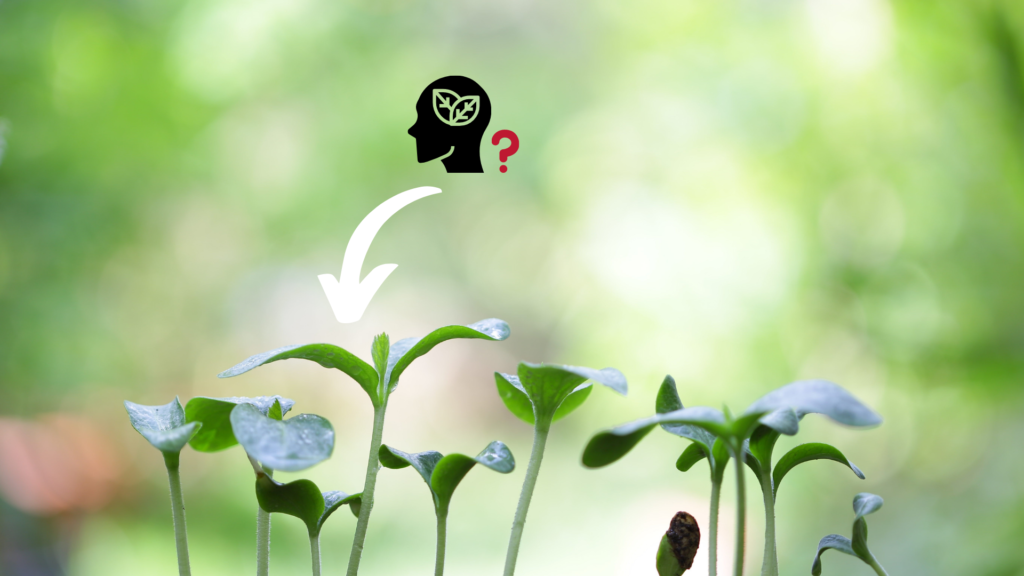Plants and animals along with some others are the two types of beings that are considered ‘living’. Although both are living beings, the thing that separates them is consciousness and awareness of the surroundings and the presence of other beings.
In this blog post, we’ll discuss the debate as to whether or not the consciousness of plants is similar to the consciousness of animals. We hope you will find it informative!
A short introduction to consciousness
While the definition of consciousness varies across most individuals, there is a consensus that it describes an awareness of the outside world. For example, individuals with a condition like blindness are not considered to be conscious of the world around them. Someone who is blind can still feel and touch things, so they know they exist as objects in their world. Their consciousness is focused on the task at hand, making sure they do not bump into things or trip over something in their way.
Awareness of Plants?

Well, the straightforward answer to this question would be “who knows after all”. But a majority of researchers, including the author of this article, believe that plants have intelligence and even consciousness. Plants not only sense pain, but they also perceive and interact with their surroundings in complex ways. The ability to feel pain, to perceive and respond to stimuli, is complex and is associated with complex neural networks and neurotransmitters. Plants also have their own kind of complex brains that operate on their own in ways comparable to human brains.
The question of how plants perceive and respond to their surroundings is one of the most impassioned science debates today. One theory suggests that plants are aware of the world around them largely through chemical reactions in their roots. The roots contain “nerves” that sense all kinds of signals from the air, from light, from touch, from other plants, or even from vibrations in our own bodies via things like bones or nerves. These reactions in the roots–known as “reactions”–are similar to “touch” in our own body. While this process is certainly intriguing, it doesn’t explain how plants sense light, water, or gravity, which is much more complex than simply taking in a particular chemical scent or touching a root.
The details of plant perception can best be explained by considering what plants sense and seeing through a little perspective. Plants have many things to which they must respond, including sunlight and air, gravity (which allows them to grow), temperatures, water levels, movement of other plants or animals in the ecosystem, and much more.
A plant’s roots are like an extension of its brain. They contain a sophisticated nervous system in which some neurons are dedicated solely to sensing certain signals or activities such as the detection of light, temperature, and vibration. In the root, these neurons detect signals that tell the rest of the plant whether there is an abundance of water or other resources available from the surrounding environment. A plant may be able to sense even tiny changes in air pressure (which affects choices such as when a plant can photosynthesize).
Plants are also able to sense how their roots are touching the ground. If a plant is grown in a pot and the bottom of the root hits the bottom of the pot, it will not grow any deeper. However, if it hits something extra soft, like mud or sand, it will continue growing. This allows a plant to build a system of tubers that connect with the surface of the earth like eyes on stalks that can see where light is coming from. A plant also has receptors in its roots capable of sensing gravity, which allows it to respond to other things such as other plants in its biome (for example, if they bend over under wind pressure).
Plants respond not just through their roots but also through their leaves. Leaves are made up of dozens of tiny cells that contract and expand like muscles and move in the same way that our own muscles can be excited. The leaves of some plants contain light-sensitive pigments, which respond to light in much the same way that our own skin does. There is even a type of plant called “human touch-me-not” whose leaves have small hairs like those on our skin which can detect pressure, just like human fingertips. Yet there are many other types of plants that don’t even have any such sensory organs in their leaves.
Of course, the brain is not the center of intelligence for plants, but their roots and leaves are the seats of most of their distinct senses.
Do plants have consciousness similar to animals’? Technical View…

Plants somehow do have consciousness similar to animals’ but it is nowhere near as advanced in comparison. While plants may be aware of the feeling that is caused by sunlight on their leaves or moisture on their roots, they will never be able to comprehend these sensations as part of a larger existence. They have no real sense of time and are unaware of the end goal of these sensations. This is where the main difference between plants and animals lies.
Similar topic: How many dimensions of human consciousness do we have?
How does the awareness of plants differ from the awareness of animals?
Unlike animals, plants do not possess the actual capacity for consciousness. Despite this fact, there is no doubt that they do have some sense of awareness about their surroundings. While they are unable to process what they feel, they do possess a basic consciousness that is based on instinct.
The feelings that plants experience are different because they also have awareness of their own self-preservation. For example, when a plant is wounded by a knife it is able to sense that it needs to react in a certain way or die. Plants can go into a state of hibernation during periods of drought or extremely cold weather and this shows us that their awareness allows them to react based on circumstance.
Animals take in stimuli through their senses and then process them making them react to actions. They are aware of other living beings and the presence of the environment around them. Plants lack this sense entirely though they do react to stimuli from things such as light or gravity.
Concluding Paragraphs
Although plants are considered to be simple organisms with no true sense of consciousness, as we continue to learn more about them we may find out that they do possess something similar to what an animal considers itself conscious of. This is a really controversial topic, hence the answer could vary from individual.
As far as we are concerned, plants possess a basic level of intelligence. This allows them to absorb sunlight and convert it into sugar for energy. This is the limit of their awareness though, and any ability to become conscious like animals is considered to be purely a product of imagination. Plants cannot truly process stimuli because they lack any sort of neural connection that would allow them to do so.
- AI-Powered PCs: Overhyped Trend or Emerging Reality? - August 21, 2024
- Princeton’s AI revolutionizes fusion reactor performance - August 7, 2024
- Large language models could revolutionize finance sector within two years - March 27, 2024



